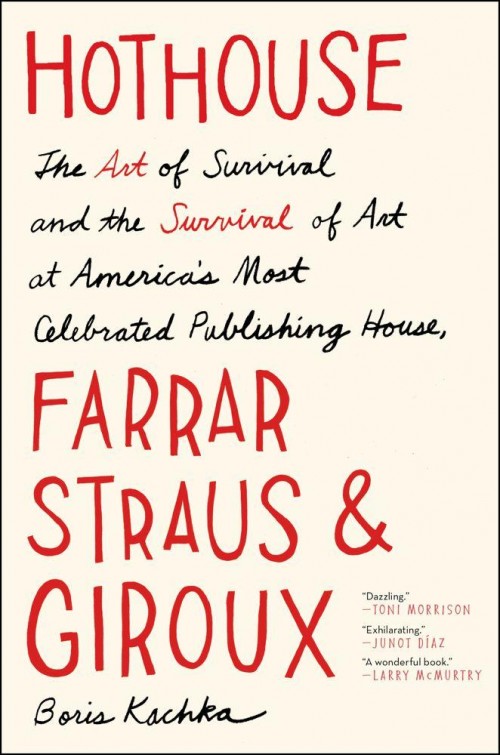At Vulture, Jonathan Galassi, the current president of Farrar, Strauss & Giroux, reflects on Boris Kachka’s new book Hothouse, a history of the New York publishing house:
FSG came into its own at a moment when postwar America was opening up and out—when “semi-outsiders,” in the words of critic Irving Howe, were “starting to break into the central spaces of American culture.” What made FSG significant, though, was its ability to catch a long series of literary waves. Straus and Giroux and a whole series of talented younger editors made stars out of Southerners (and Catholics) like Flannery O’Connor and Walker Percy and Jews like Bernard Malamud, Philip Roth, and the émigré Isaac Bashevis Singer. There were the poets of the Lowell-Bishop-Berryman generation; Susan Sontag, an entire typhoon on her own, who clued Straus in to great, obscure European writers; and the late-sixties Latin American “boom” (Fuentes, Vargas Llosa, Neruda). There were the New Journalists (Tom Wolfe, Joan Didion) and New Yorker epigone John McPhee; the internationalist poets Derek Walcott, Seamus Heaney, and Joseph Brodsky; and great children’s writers like Maurice Sendak, Madeleine L’Engle, and Roald Dahl. All contributed to what Kachka calls “FSG culture,” which he describes as “high-minded and scrappy, aggressive and refined, quintessentially American but thoroughly international.”
